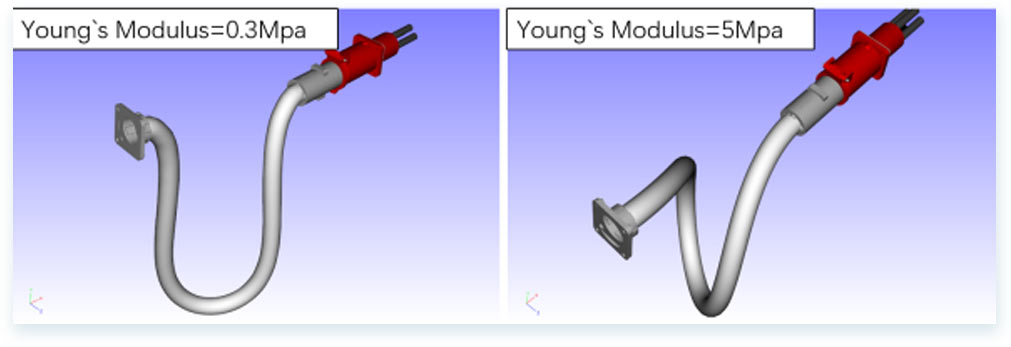Rail Vehicle Motion Cable
Real-time, dynamic simulation and optimization design of brake hoses, efficiently assessing the possible static or dynamic risks of brake hoses, comprehensive monitoring of interference, pulling, over-bending and fatigue damage.
• The curve passing ability of rail vehicles is an important research content in the vehicle design process. When the trains are running on the curved line, the car body and the bogie will swing relative to each other, there are large number of flexible cables in the vehicle connection area and the bogie area, so these flexible cables will be displaced, stretched, compressed, twisted, etc. Damage caused by reciprocating motion, frictional interference of the cable is often found during the overhaul process. In the past, geometric mapping, empirical formulas, or real vehicle tests were often used for research or evasion. These methods can only be used to study the relative motion of rigid parts such as trains and bogies, and cannot be used for simulation of flexible cables.

• Applying advanced flexible cables simulation software IPS Cable Simulation to the development of rail vehicle moving cables. It can simulate the deformation, force , bending and torsion state of the moving cables under any road conditions, and optimize the design in real time.
• Real-time simulation of various flexible cables such as jumper cable in car body connection area, power cables and signal lines in the bogie area can be realized by simulating and calculating the deformation and stress conditions of flexible . By simulating the assembly process of the flexible cables, the length of the cable and the position of the clamp can be verified and optimized, thereby reducing design errors, shortening the design cycle, and saving test costs. The advantages and features are as follows:
•The cables are flexible, considering the material properties of the cable and the effects of gravity;
•The simulation is real-time, no need to draw a grid, the optimization results are presented in real time;
•Full control of various risks, including interference, stress, torsion and bending;
•Considering the effects of material, manufacturing, and assembly tolerances;
•Considering the effects of pressure and inertia, realizing durability analysis .

